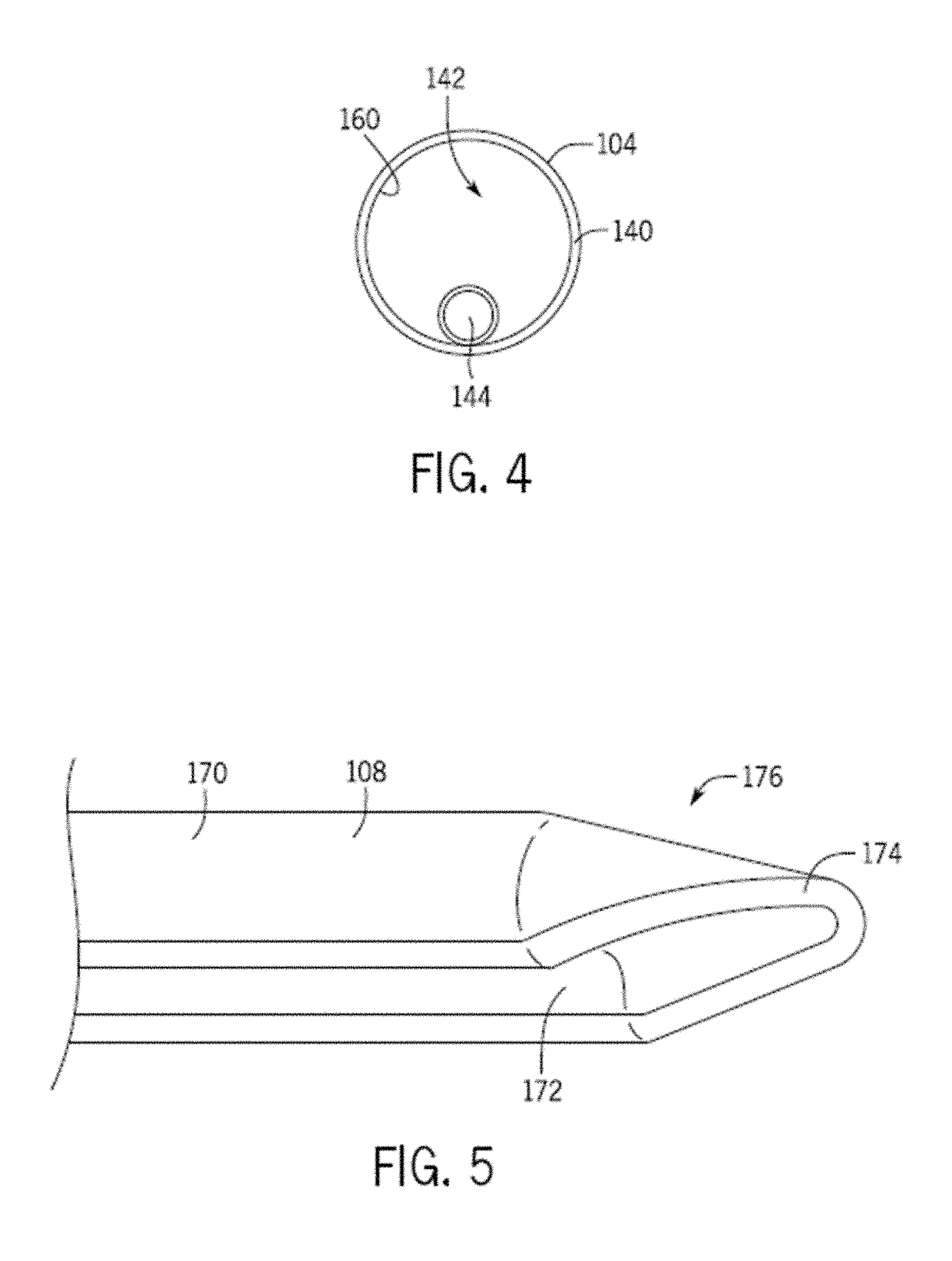System and method for guided removal from an in vivo subject
a technology of in vivo objects and systems, applied in the direction of guide wires, infusion syringes, applications, etc., can solve the problems of affecting millions of individuals worldwide, affecting the health of individuals, and causing significant pain to individuals and kidneys
- Summary
- Abstract
- Description
- Claims
- Application Information
AI Technical Summary
Benefits of technology
Problems solved by technology
Method used
Image
Examples
Embodiment Construction
[0046]Referring generally to FIGS. 1-8, a removal device 100 includes a sheath 102, a vacuum tube 104, and a navigation mechanism 106. The removal device 100 optionally includes an introducer core 108 adapted to assist in positioning one or more portions of the removal device 100 in a passageway. The removal device 100 further optionally includes a valve 110 that is in communication with, and assists in controlling suction that is supplied to the vacuum tube 104. One or more of the sheath 102, navigation mechanism 106, and / or introducer core 108 may be optional for use with the removal device 100. For example, in one configuration, the sheath 102 is omitted from the removal device 100.
[0047]As best seen in FIGS. 7 and 8, the removal device 100 is designed to be positioned in a passageway of a patient (e.g., urinary tract), and in particular, into a patient's ureter 112. The removal device 100 includes a renal end 114 designed to be positioned proximate the patient's kidney 116, and ...
PUM
 Login to View More
Login to View More Abstract
Description
Claims
Application Information
 Login to View More
Login to View More - R&D
- Intellectual Property
- Life Sciences
- Materials
- Tech Scout
- Unparalleled Data Quality
- Higher Quality Content
- 60% Fewer Hallucinations
Browse by: Latest US Patents, China's latest patents, Technical Efficacy Thesaurus, Application Domain, Technology Topic, Popular Technical Reports.
© 2025 PatSnap. All rights reserved.Legal|Privacy policy|Modern Slavery Act Transparency Statement|Sitemap|About US| Contact US: help@patsnap.com



